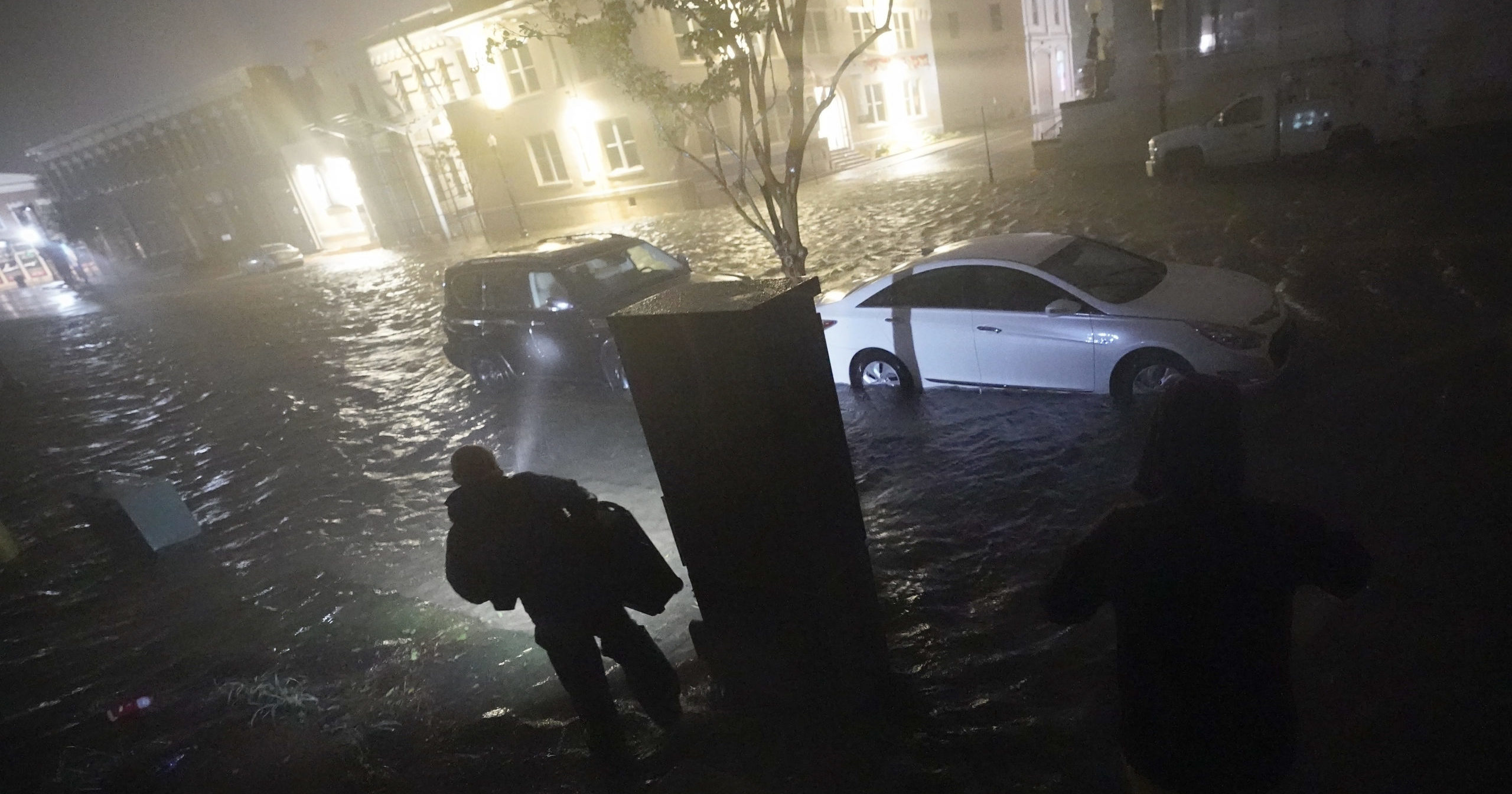
'It's Just a Nightmare': Slow-Moving Hurricane Sally Blasts Florida, Alabama
Hurricane Sally blasted ashore near the Florida-Alabama line on Wednesday with 105 mph winds and feet of rain, swamping homes and trapping people in high water as it crept inland for what could be a long, slow and disastrous drenching across the Deep South.
Moving at an agonizing 3 mph, or about as fast as a person can walk, the storm made landfall at 4:45 a.m. close to Gulf Shores, Alabama, battering the metropolitan areas of Mobile, Alabama, and Pensacola, Florida, which have a combined population of almost 1 million.
Emergency crews plucked people from flooded homes. In Escambia County, which includes Pensacola, more than 40 were rescued, including a family of four found in a tree, Sheriff David Morgan said.
He estimated thousands more will need to flee rising waters in the coming days. County officials urged residents to stick to text messages for contacting family and friends to keep cellphone service open for 911 calls.
“There are entire communities that we’re going to have to evacuate,” Morgan said. “It’s going to be a tremendous operation over the next several days.”
The storm collapsed a section of the bridge across Pensacola Bay, the sheriff said, and crews struggled to stop a barge that had broken loose from drifting into a nearby bridge that is part of Interstate 10. Officials closed I-10, which runs parallel to the Gulf Coast, in hard-hit areas of both Florida and Alabama.
More than 2 feet of rain was recorded near Naval Air Station Pensacola, and nearly 3 feet of water covered streets in downtown Pensacola, the National Weather Service reported.
“It’s not common that you start measuring rainfall in feet,” forecaster David Eversole said in Mobile.
“Sally’s moving so slowly, so it just keeps pounding and pounding and pounding the area with tropical rain and just powerful winds. It’s just a nightmare.”
The storm knocked out power to about a half-million homes and businesses.
It was the second hurricane to hit the Gulf Coast in less than three weeks and the latest blow in one of the busiest hurricane seasons ever recorded, so active that forecasters have nearly run through the alphabet of storm names with 2 1/2 months still to go.
At the start of the week, Sally was one of a record-tying five storms churning simultaneously in the Atlantic.
An emergency crew rescued two people on Dauphin Island, Alabama, after the hurricane ripped the roof off their home and the rest of the house began to crumble.
“As things started to peel off and fall apart, they got scared and called for assistance,” Dauphin Island Mayor Jeff Collier said by phone. He said no one was injured.
In Orange Beach, Alabama, winds blew out the walls in one corner of a condominium building, exposing the interiors of condos on at least five floors, video posted online showed. Other images showed boats shoved onshore by storm surge.
At least 50 people in Orange Beach were rescued from flooded homes and taken to shelters, Mayor Tony Kennon said.
“We got a few people that we just haven’t been able to get to because the water is so high,” Kennon said. “But they are safe in their home, as soon as the water recedes, we will rescue them.”
Street lights were knocked out in downtown Mobile. Trees were bent over as the rain blew sideways in the howling wind.
In downtown Pensacola, water rushed down some streets like river rapids, forming whitecaps as it slapped against buildings and rose above car tires.
Sally blew ashore as a Category 2 storm but weakened to a Category 1, with winds of 80 mph, by mid-morning. It was moving to the northeast at 5 mph.
Forecasters warned that heavy rain will continue into Thursday as the storm moves inland over Alabama and into central Georgia.
National Hurricane Center forecaster Stacy Stewart said the rain will be “catastrophic and life-threatening” over portions of the Gulf Coast. Forecasters predicted 10 to 20 inches of rain, with up to 35 inches in some spots.
“Sally has a characteristic that isn’t often seen and that’s a slow forward speed, and that’s going to exacerbate the flooding,” Ed Rappaport, deputy director of the hurricane center, said.
He likened the storm’s plodding pace to that of Hurricane Harvey, which inundated Houston in 2017.
Sally’s effects were felt all along the northern Gulf Coast. Low-lying properties in southeastern Louisiana were swamped by the surge. Water covered Mississippi beaches and parts of the highway that runs parallel to them.
President Donald Trump issued emergency declarations for parts of Florida, Alabama, Mississippi and Louisiana. White House press secretary Kayleigh McEnany said that Trump was in contact with the states’ governors and ready to help “in every way possible.”
Hurricane Laura pummeled southwestern Louisiana on Aug. 27. Thousands of people were still without power from that storm, and some were still in shelters.
Meanwhile, far out in the Atlantic, Tropical Storm Teddy became a hurricane with winds of 100 mph. Forecasters said it was likely to become a major hurricane, reaching Category 4 strength on Thursday.
The Western Journal has reviewed this Associated Press story and may have altered it prior to publication to ensure that it meets our editorial standards.
Truth and Accuracy
We are committed to truth and accuracy in all of our journalism. Read our editorial standards.
Advertise with The Western Journal and reach millions of highly engaged readers, while supporting our work. Advertise Today.












